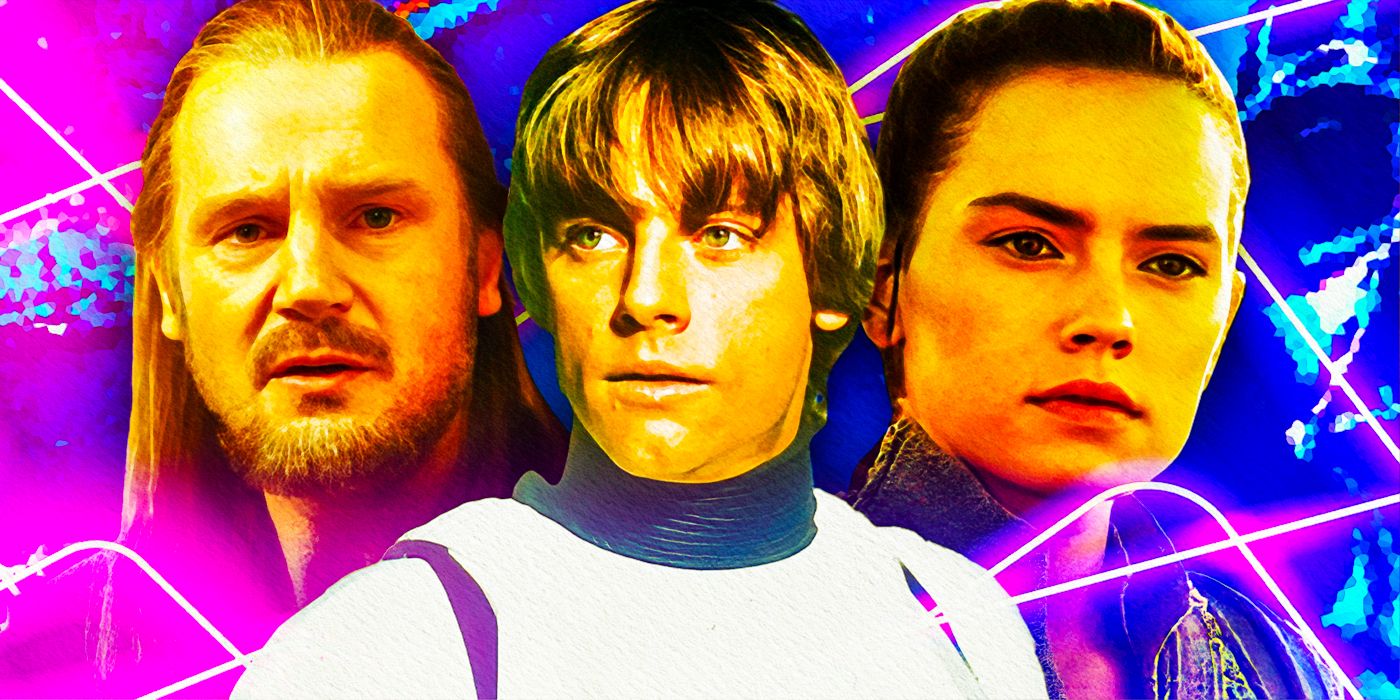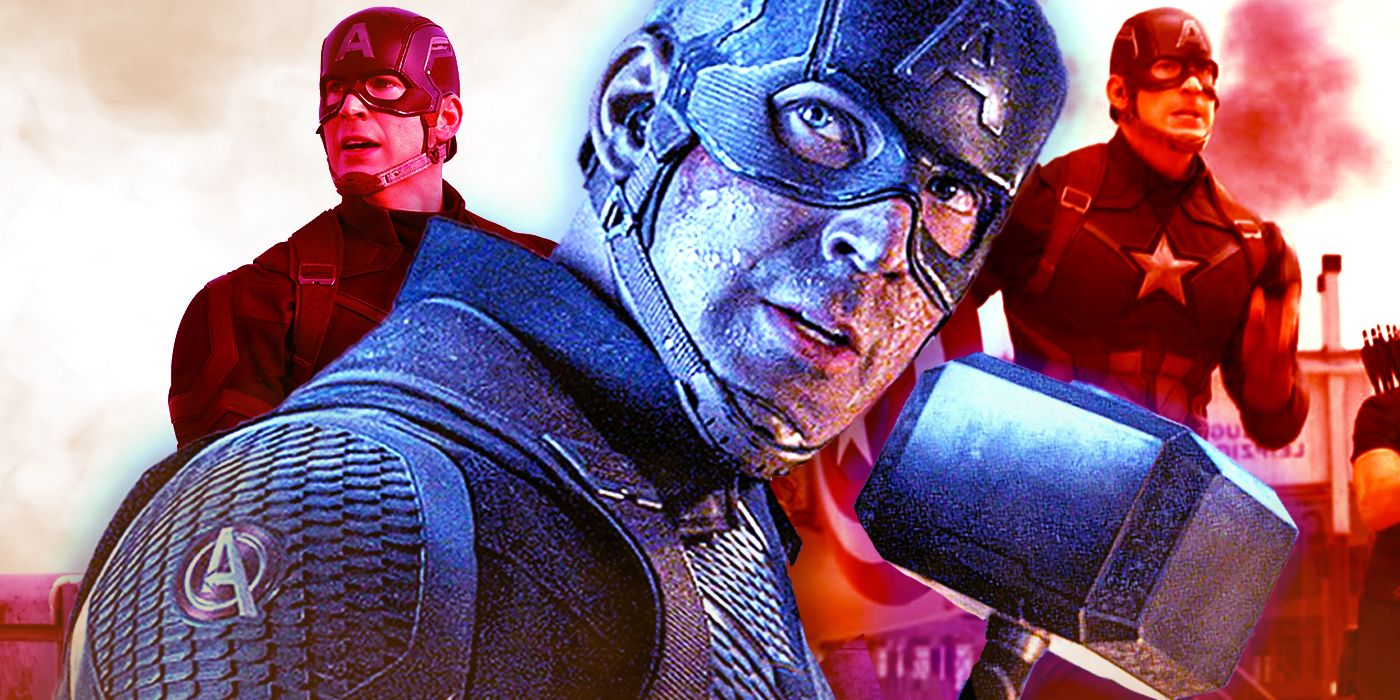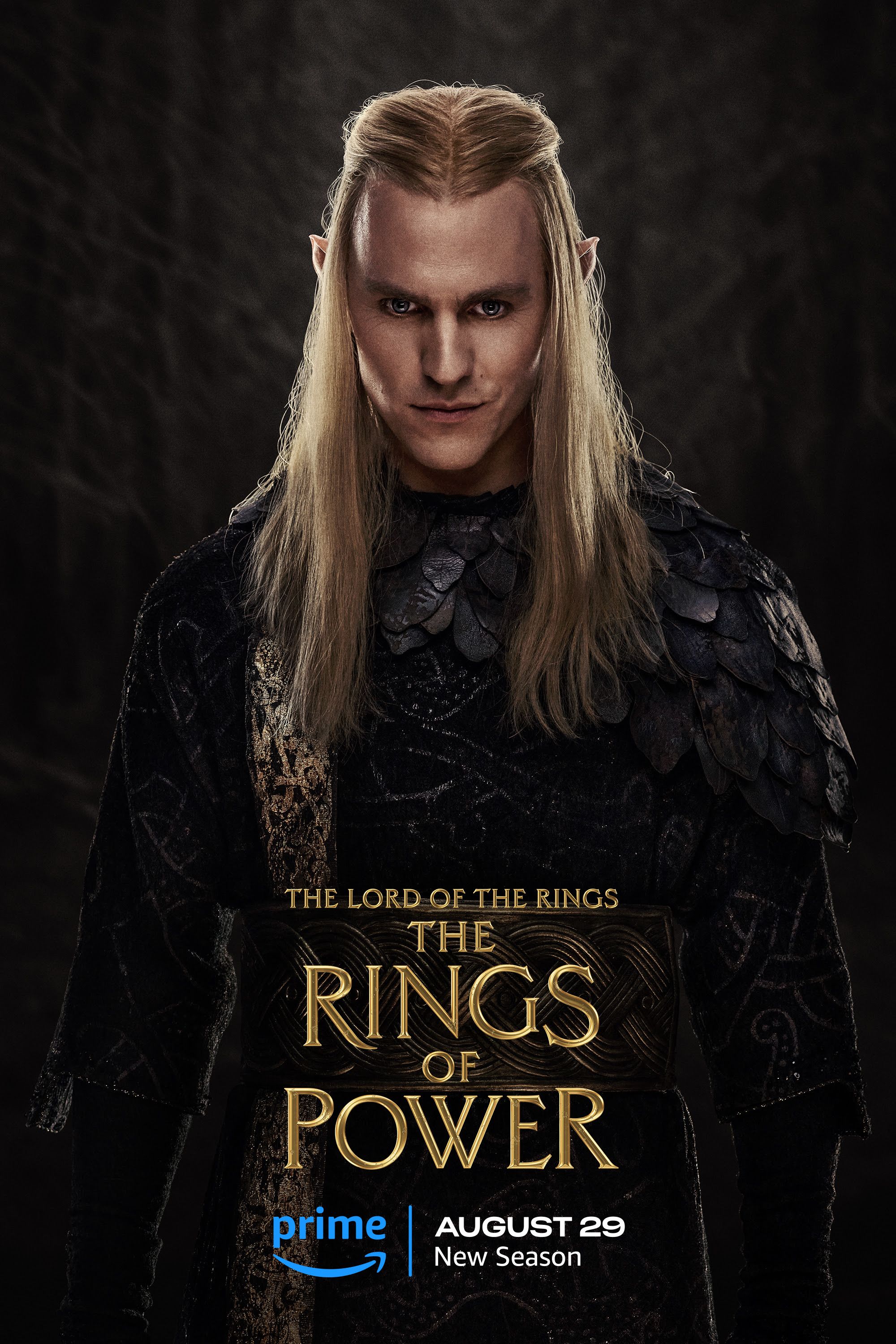The Pirates of the Caribbean franchise did not start to receive its worst reviews until after the original trilogy ended, but the third film in the series did leave a lot of plot details unclear. Released in 2003, Pirates of the Caribbean: The Curse of the Black Pearl was something of a surprise success for The Ring helmer Gore Verbinski. Hopes were tentatively high for the summer release but tempered by the fact that Cutthroat Island’s monumental failure had all but ended the swashbuckling action sub-genre a mere eight years earlier.
However, Pirates of the Caribbean had one thing that director Renny Harlin’s doomed earlier release did not. Captain Jack Sparrow, the role Johnny Depp made famous, provided a comic anchor for the series, and his freewheeling antics came to define the Pirates of the Caribbean franchise for the four films that followed. However, while Depp’s performance ensured that Pirates of the Caribbean: The Curse of the Black Pearl enjoyed a combination of critical and commercial success rare for a big blockbuster, it did pose a problem for later installments in the series.
By the time The Curse of the Black Pearl’s sequels went into back-to-back production, it was clear that viewers wanted more of Depp’s roguish charmer more than anything else in the film. Later Pirates of the Caribbean sequels simply dropped the supporting cast to place Depp front and center and focus on Sparrow entirely, but Verbinski and his fellow creatives had a vision for the original trilogy that needed to fit around the studio’s demands that Jack was made the main attraction of the series. As a result of this creative rejigging, the original trilogy’s final movie At World’s End left a lot of questions unanswered. Although At World’s End was far from the worst-reviewed Pirates of the Caribbean installment, its knotty plot did need a few diagrams and blank pages to make sense of—and even then, viewers were still left with these niggling plot holes to ponder for years after its release.
Why Didn’t The Pirate Lords Work With The East India Trading Company?
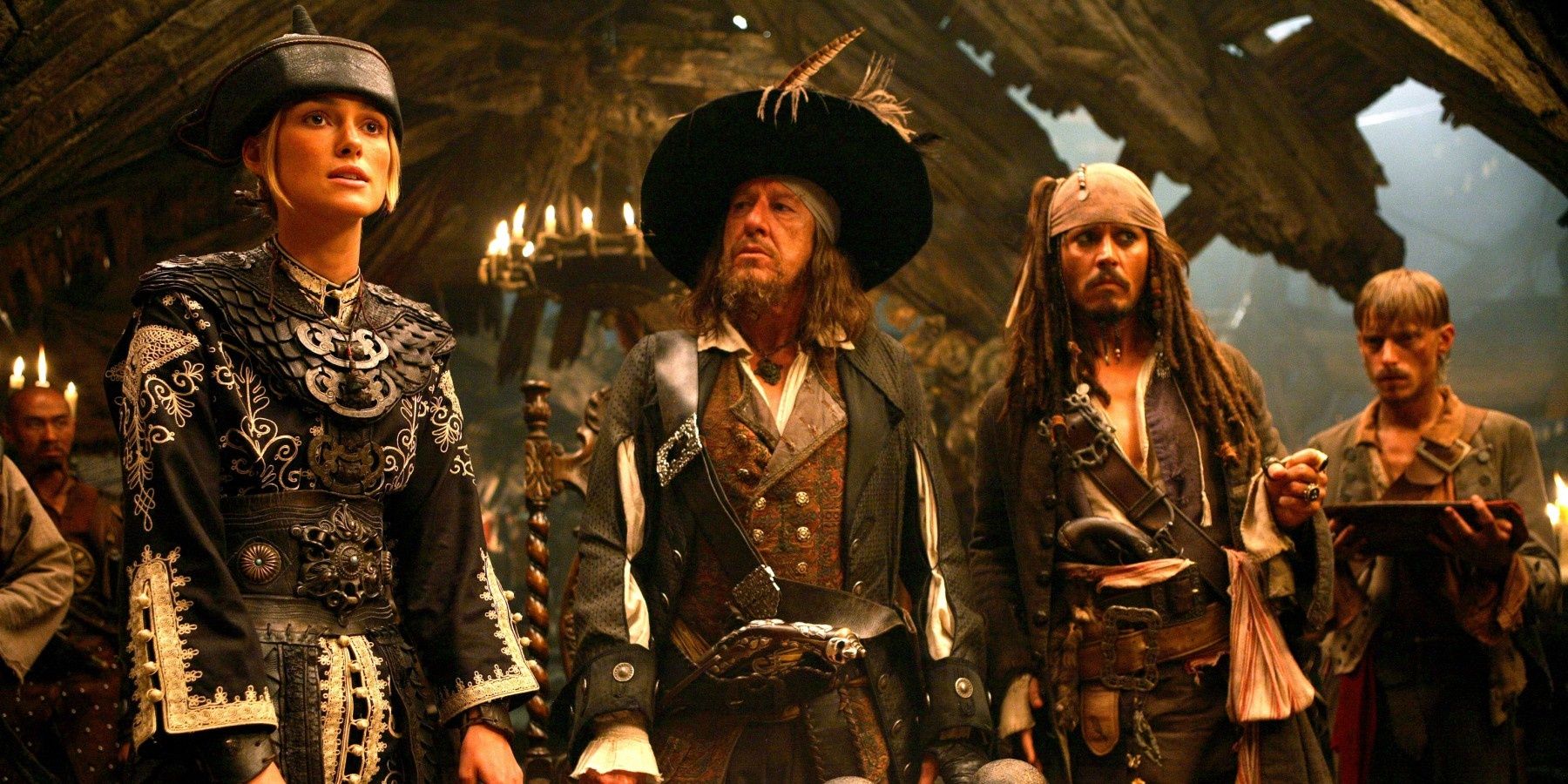
In the first Pirates of the Caribbean sequel, Dead Man’s Chest, the threat of the East India Trading Company and its villainous head man Cutler Beckett was easy to understand—like the real-life corporation, they threatened to put an end to the age of piracy by regulating the high seas. However, At World’s End makes it clear that the Pirate Lords already had an intricate system of governance that ruled the supposedly “lawless” antiheroes of the series, so why did they not just broker a deal with the Company? Odds are the cutthroat Beckett wouldn’t be willing to, as he did make it clear in the sequel’s dialogue that he wanted to crush piracy as a whole, but the sequel never actually explains why one regulatory body wouldn’t just work with the other.
This is the sort of practical plot hole that would never have arisen in the first film, where The Black Pearl’s Captain Barbossa famously informs Elizabeth that the pirate’s code is treated more like an informal set of guidelines than as rigid rules to be adhered to. This characterization of the code seems to make much more sense for the world of Pirates of the Caribbean, wherein characters constantly switch allegiances for the sake of personal interests and sometimes backstab each other multiple times in the space of a single scene. However, At World’s End features a lengthy, ponderous sequence wherein the Pirate Lords convene to discuss the particulars of their internal rules, meaning there is a formal code that the East India Trading Company could have tried to work around (meaning they could have co-existed with pirates, thus deflating the central tension of the entire trilogy).
How Did Jack and Elizabeth Reconcile?
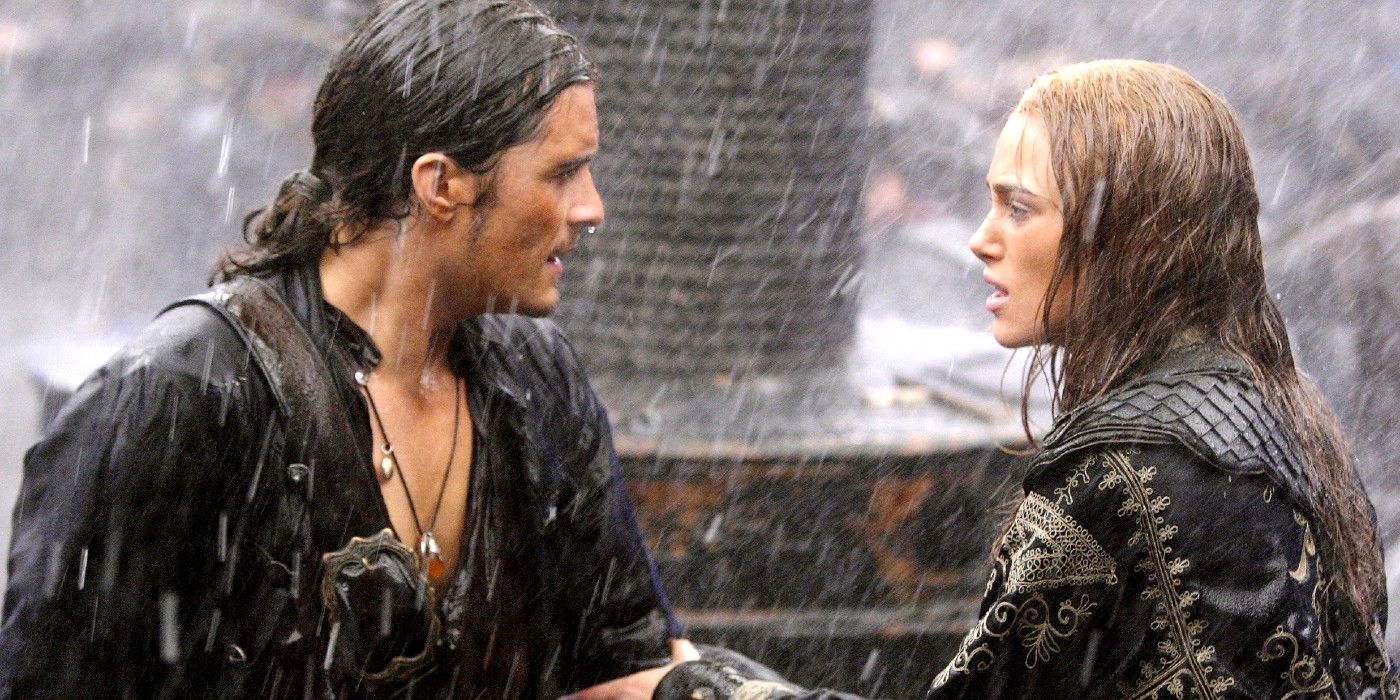
Poor Will Turner and Elizabeth Swann are some of the Pirates of the Caribbean franchise’s most mistreated heroes. When viewers leave them behind at the end of Dead Man’s Chest, an implausible scheme has left the naive Will believing that Elizabeth loves Jack. This seemingly dooms any hope of their reconciliation as Will is (implausibly) unable to stop and listen for long enough to hear the story behind Elizabeth’s plan (which involved kissing Jack to distract him and ensure he was sacrificed to the Kraken). The pair are separated for much of At World’s End, with Will facing off against Davy Jones and being reunited with his father while Elizabeth graduates from former damsel in distress to full-blown Pirate Lord. Then, once reunited, they’re almost immediately wed (by Barbossa, of all people), with their relationship-rebuilding presumably taking place offscreen. So, when did Will begin to believe that Elizabeth killed Jack, only to immediately save him, as part of an elaborate scheme? To be fair to this plot hole, the pair do share some scenes patching up their differences, but the jump from being broken up as the movie begins and married once it ends is never properly papered over on-screen.
Why Did The East India Trading Company Give Up?
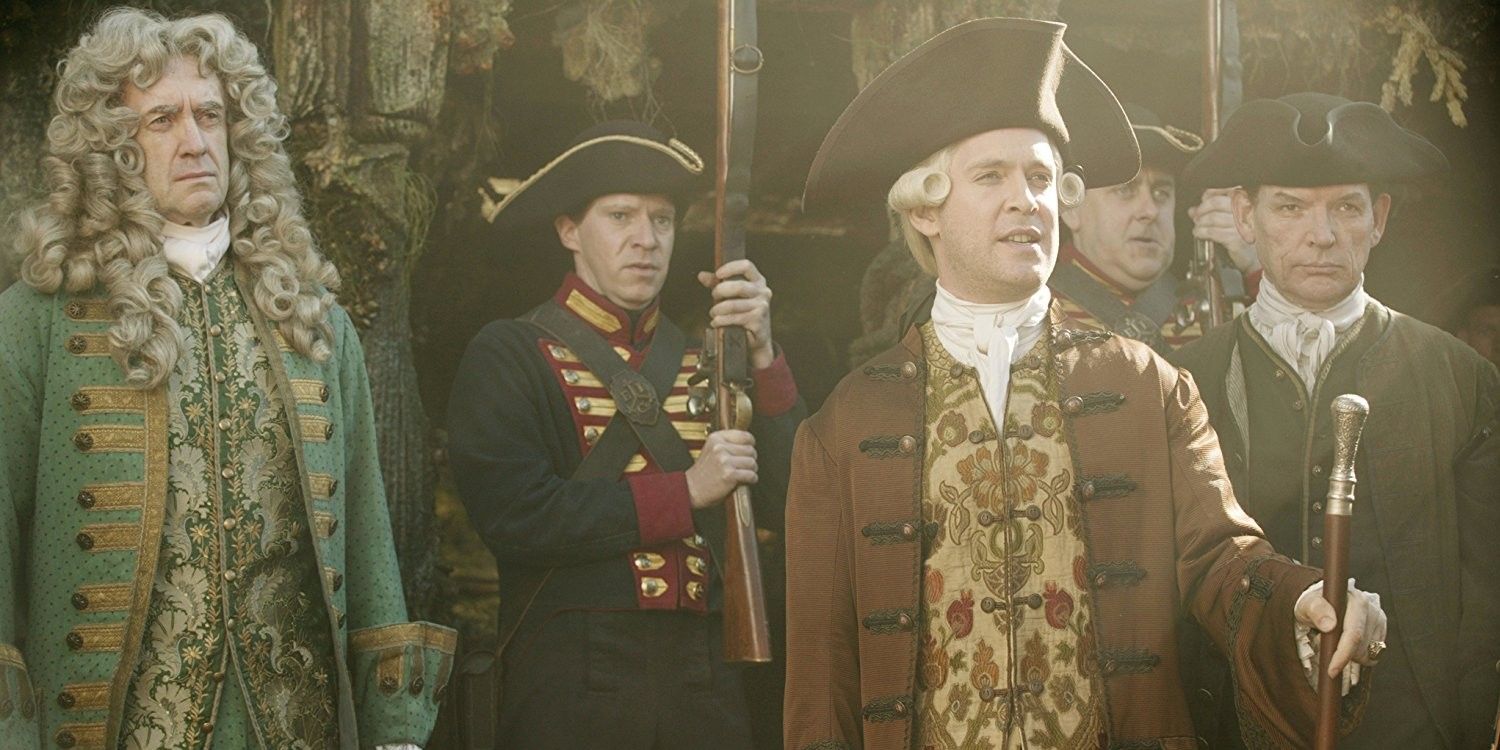
Beckett’s ship (and presumably its captain) was blasted to bits during the finale, wherein the villain goes out in style while the Black Pearl and Flying Dutchman both open fire on him. That explains what becomes of Beckett himself and his ship, but why did the rest of the East India Trading Company give up fighting the Black Pearl and Flying Dutchman? By this stage in the movie, Davy Jones is dead and Calypso is seemingly free, meaning the surviving sailors are left with no supernatural villains to fight (save for the Flying Dutchman). The answer to this plot hole is most likely that the remnants of the East India Trading Company knew they had no chance against the supernaturally-powered Flying Dutchman, but the fact that this is never addressed and the squadron simply disperses is a bizarre oversight. It may not be the most egregious of At World’s End’s many plot holes, but this is further proof that the original Pirates of the Caribbean trilogy was not as tightly plotted as some fans claim even in comparison to the messier sequels.
